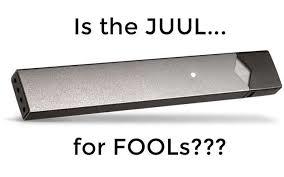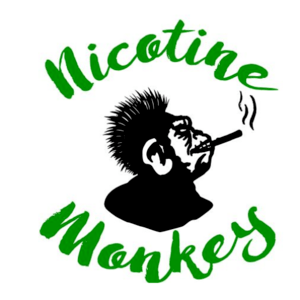 In the venerable New Yorker (24 May 2018) there was an article about the emerging problems with the latest nicotine delivery device that looks like a USB stick, called Juul. The article starts by parroting a myth, twice:
In the venerable New Yorker (24 May 2018) there was an article about the emerging problems with the latest nicotine delivery device that looks like a USB stick, called Juul. The article starts by parroting a myth, twice:
Nicotine is both a stimulant and a relaxant: it peps you up when you’re tired, and if you’re anxious it calms you down.
This is not true. Nicotine is certainly a stimulant, having an effect similar to drinking a cup of coffee: it raises the heart rate and puts your blood pressure up. But it’s not a relaxant – this is an illusion.
Nicotine, the all-purpose drug
A characteristic withdrawal effect of nicotine – what you might feel 40 minutes or so after the last dose – is mild anxiety. And it is the relief of this nicotine-induced anxiety by another dose of that poison which is the source of the illusion and the myth that nicotine is a relaxant.
In any case, the idea that people use nicotine as a stimulant when they’re feeling tired and as a relaxant when they’re anxious is highly dubious. A typical ‘Juul-er’ will take around 200 sucks from the device in the course of a day. Such people would seem to be in a bad way to be suffering so much from fatigue or anxiety.
Well, they are in a bad way. They may start ‘Juul-ing’ because it seems cool or rebellious or because their friends are doing it, but soon they will find themselves getting through one Juul pod, containing the equivalent amount of nicotine in a pack of cigarettes, every day. And then they can’t stop.
Arduousness of life
The New Yorker staff writer responsible for this piece, Jia Tolentino, has been busy with Wikipedia. She goes on:
The nicotine in tobacco binds to receptors in multiple regions of the brain, raising dopamine levels and mimicking a key neurotransmitter that affects focus and arousal. This is so pleasing – and life so arduous – that nearly forty million Americans currently smoke, despite knowing that it may give them lung cancer.
Now we have two more illusions about why people smoke or put nicotine into their bodies by some or other means: escaping the arduousness of life and seeking pleasure.
This is nonsense. How do non-smokers cope with life’s difficulties? And do nicotine users experience a state of bliss with every suck on their drug delivery devices?
Devil’s stick
No desk-bound theorist, Ms Tolentino went out and about and talked with high school students, or at any rate to those in the thrall of ‘Juul-ing’. It seems they ‘took a level of ambient stress for granted’ and this, apparently, was why they ‘Juul-ed’. Another comment was:
You’re expected to Juul, but you’re expected to not depend on it. If you’re cool, then you Juul with other people, and you post about it, so everyone will see that you’re social and ironic and funny.
I wonder why these high-school students can’t be cool, social, ironic, and funny without inhaling poison.
For another student Juuling is definitely not funny: The Juul is the ‘devil’s stick’. I hit it from the moment I wake up to the moment I can’t [sic] go to sleep, and keep Juuling.
This is the problem: it’s drug (nicotine) addiction.
Much, much, much worse
The point is well made in a quote by paediatrician Dr Jonathan Winickoff:
Juul is already a massive public-health disaster – and without dramatic action it’s going to get much, much, much worse.
I don’t think he’s exaggerating. But what action, dramatic or otherwise, does he suggest? He doesn’t say.
I’ll say it for him. Juul and all types of nicotine delivery devices should be banned.
But what if you’re already addicted and find you can’t stop? To free yourself from slavery to nicotine is easier than you might think.
The Symonds Method of stopping smoking, taught in a one-to-one session, works just as well for people using Juul and e-cigarettes as for smokers.
Text © Gabriel Symonds

Leave A Comment